Prepared for the 9th World Congress of Herpetology held in Dunedin in 2020.



Cathy Rufaut1, Dhana Pillai 1,2, Dave Craw 1, Scott Mossman 3
1 Geology Department, University of Otago, Dunedin, N.Z.
2 Haehaeata Natural Heritage Trust, Clyde-Alexandra, N.Z.
3 OceanaGold Ltd, Macraes Flat, N.Z.
Abstract
It is well known that rock refuges structure natural lizard populations and provide benefits for species survival. Increasingly, lizard management involves building new rock habitat for mitigation and restoration purposes (Hitchmough et al. 2016).
The construction of lizard rock stacks is typically ad hoc and successes are variable. There is a need for more science input into rock stack design, to create new habitats favourable for local species (Lennon 2019).
In this poster, we tease apart geological settings and processes to understand physical attributes of rock associated with lizard spatial aggregations at Macraes Gold Mine in Otago, New Zealand.
The mining company, OceanaGold Ltd., is required to build lizard rock stacks to mitigate against habitat loss.
Baseline assessments show that lizard sign is naturally highly localised around particular outcrops at the mine (also in Whitaker 1986). This includes breeding pairs of geckos.
We found that lizard refuges were linked to key features of schist outcrops that are definable, predictable, and able to be reproduced in constructing new habitats.
1. Schist Lithology Forms Landscape Foundations
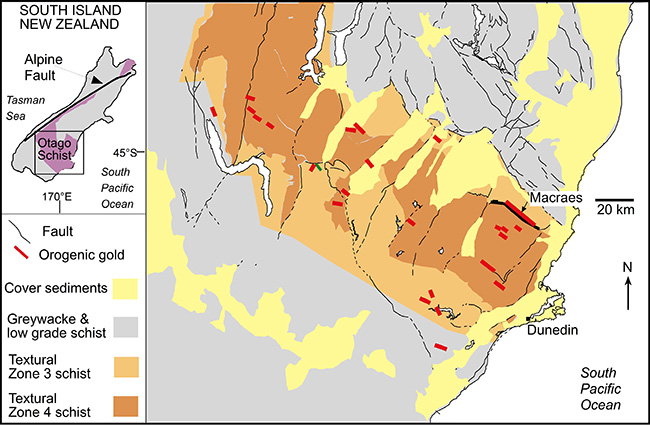
Macraes Gold Mine straddles two different textural zones (TZ) of Otago schist:
TZ3 = medium-grained micas (silicate minerals), moderately-foliated (layered) rock.
TZ4 = coarse-grained micas, well-foliated (layered) rock.
2. Outcrop Development Provides Lizard Habitat
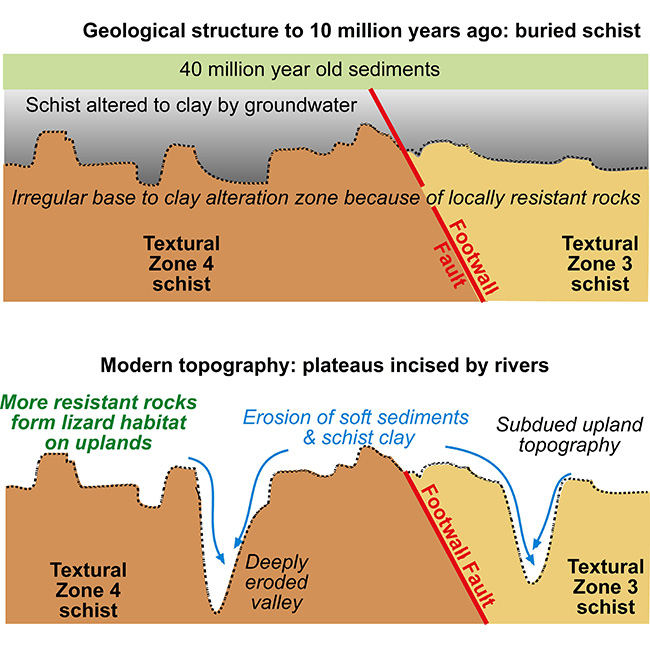
Two distinct landscapes occur within the mine's boundaries:
TZ3= gentle rolling hills with occasional outcrops, shallow gullies, TZ4= abundant outcrops and deep, steep gullies.
Lizards are distributed across both but comparative densities are unknown.
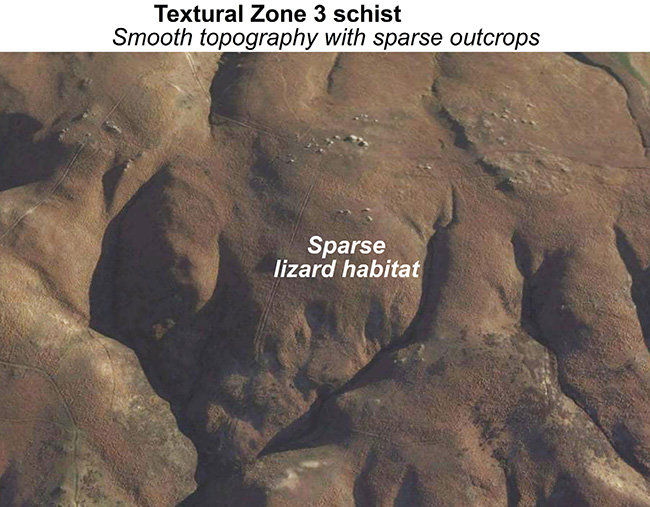
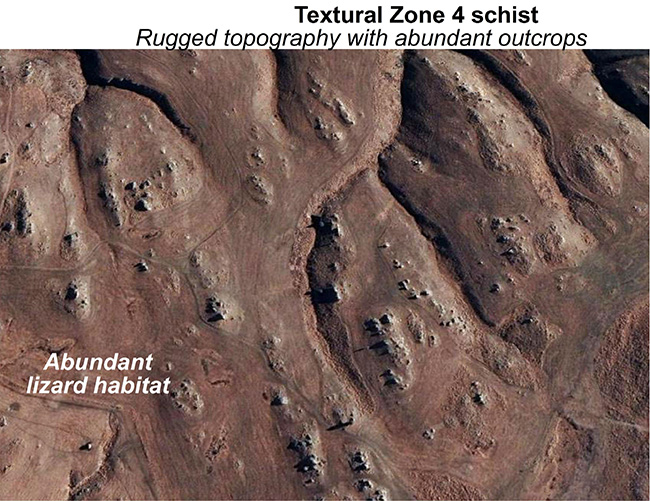
3. Schist Slabs & Blocks Structure Lizard Refuge Sites
Outcrops are not uniform at the mine. They are made up of different rock end members that produce schist slabs and schist blocks.
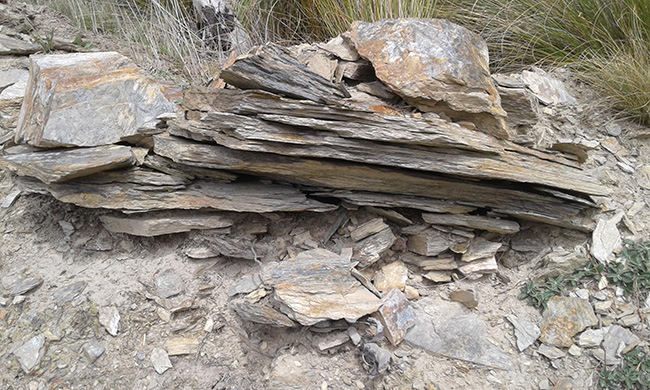
Micaceous (pelitic) schist slabs develop multiple, narrow horizontal crevices 1-3cm wide from coarse micas preferentially weathering.
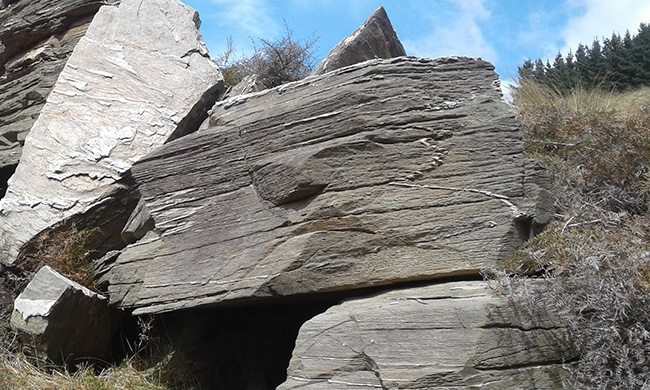
Quartzofeldspathic (psammitic) schist blocks have no or shallow horizontal crevices due to smaller micas and instead fracture along vertical joints.
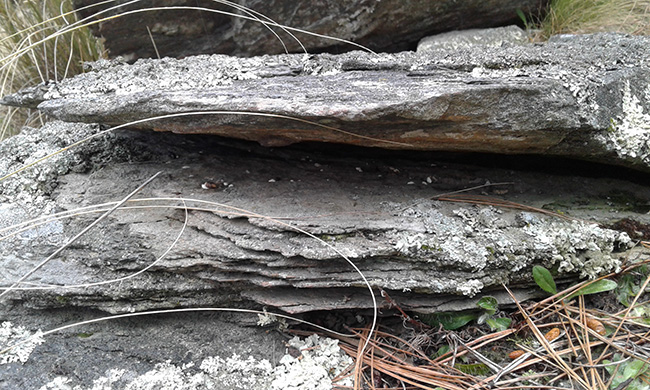
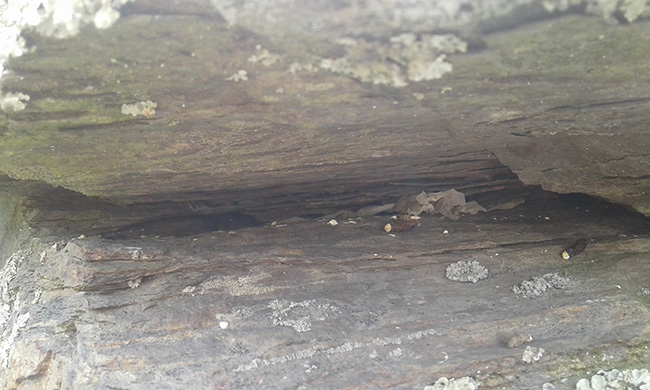
.
4. Rapid Surveying Textural Zone 4 Schist
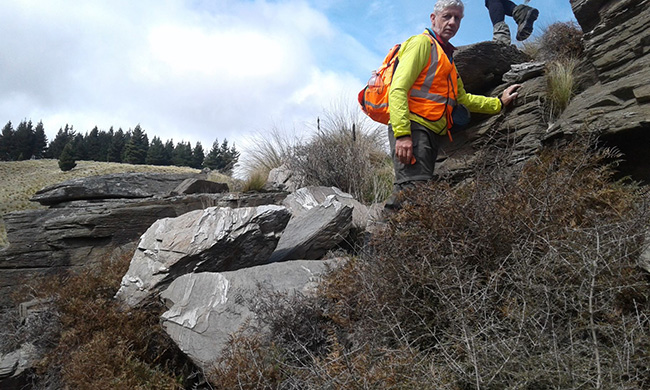
High quality refuges are associated with outcrops that contain partially-oxidised, micaceous schist, with narrow horizontal partings along foliation. Partings may be complete to form 'pancake' slabs or partial to variable depths. 'Lizard quarters' are supported by quartzofeldspathic schist bases, less resistant to weathering, that elevate refuge sites to the top 1/3 of a commonly occurring 2m x 2m outcrop.
References
Hitchmough, R.A., Adams, L.K., Reardon, J.T., Monks, J.M. 2016. Current challenges and future directions in lizard conservation in NZ. J. of the Royal Society of NZ 46, 29-39.
Lennon, O. 2019.Mitigation translocation for conservation of New Zealand skinks. PhD Thesis, Victoria University of Wellington, 193pp.
Whitaker, A.H. 1986. Macraes Flat Joint Venture Area Terrestrial Fauna of the Deepdell Catchment, North Otago. 10p.
Thanks to: Stephen Read, Gavin Lee, Kyle Thompson-Connell, Charlotte Boy
